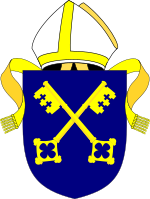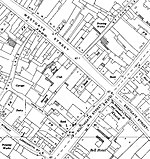20 College Green
Buildings and structures in GloucesterGloucestershire building and structure stubsGrade II* listed houses in Gloucestershire

20 College Green is an early 17th-century house located in Gloucester. Together with the associated part of the Abbey Precinct Wall the house is a Grade II* listed building with Historic England. It is located in the precincts of Gloucester Cathedral. The house was begun in 1596, but was altered and added to in the 18th century. The house incorporates the 12th century precinct wall of St Peter's Abbey as well as another wall that lay between the former monk's cemetery to the east and the lay cemetery to the west. 20 College Green was listed as a Grade II* listed building on March 12, 1973. Its residents have included the musicians Herbert Sumsion and John Sanders.
Excerpt from the Wikipedia article 20 College Green (License: CC BY-SA 3.0, Authors, Images).20 College Green
College Court, Gloucester
Geographical coordinates (GPS) Address Nearby Places Show on map
Geographical coordinates (GPS)
| Latitude | Longitude |
|---|---|
| N 51.86657 ° | E -2.24672 ° |
Address
College Court 20
GL1 2NJ Gloucester
England, United Kingdom
Open on Google Maps











